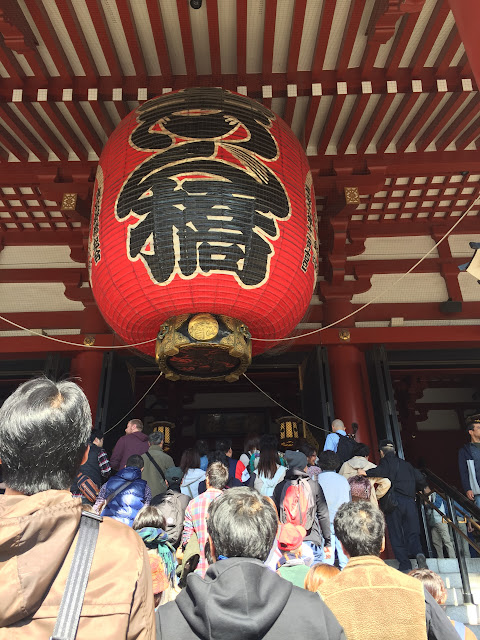Visita Iglesia to the Sensō-ji Temple
As per tradition, I wanted to visit a place in Tokyo that spoke of its traditions and unique identity. This meant that I was going to visit a site with temples and/or a traditional village. It was a toss up between visiting Asakusa's Sensō-ji Temple or Shibuya's Meiji Shrine. But I've been to Shibuya before so I opted to prioritise Asakusa... I only had a morning to explore Tokyo before going back to Odaiba and I didn't want to repeat a visit.
The Sensō-ji Temple turns out to be the oldest Buddhist temple in Tokyo, built in 645 AD. It is said to be one of the most colourful temples in the city. I thought, therefore, that it would be a good place to visit and see something traditional–uniquely Japanese–in this ultramodern city.
Reading through tourist guides, I learned that the Sensō-ji Temple could get crowded. But it's a pilgrimage site as well, so I didn't expect it to be too chaotic. I was thinking that people would actually behave because this is sacred ground to worshippers. The sight that greeted me at the Kaminarimon (Thunder Gate) was a surprise: there were so many people! It's as if everyone decided to visit the temple the same time I was there! Too many tourists!
Because there were so many people, I wasn't able to take a closer look at the features of this gate. All I noticed was this giant red lantern right in the middle of the gate. Many of the visitors were taller than I am; a challenging situation for me because it meant that I wouldn't be able to see anything when I started to plunge towards the temple. Good thing I was carrying my selfie stick with me; in this situation, I could put the stick high above my head and take photos. This allowed me to take photos as I was walking through the jam-packed Nakamise-dōri, the street lined with souvenir shops.
But after I had passed the shopping street, I approached the Hozōmon (Treasure House Gate). It provided access to the inner, more peaceful section of the temple complex. On either side of the gate are two giant statues of red creatures; these statues probably guard the deities inside the temple.
This gate seemed to filter the tourists further because by the time I passed it, the crowd was considerably thinner. Or so I thought because people probably started spreading out. The stairs leading to the Hondō (main temple building), however, was packed. But once I got to the top of the stairs and into the temple, I was greeted by a peaceful atmosphere. People here were prayerful and were looking around quietly. Photography of the deity at the centre of the altar wasn't allowed so I just contented myself with looking at the paintings in the ceiling and at people.
Honestly, I wonder how real pilgrims–as opposed to tourists–viewed this place. With such big crowds, how do worshippers feel closer to their deities as they prayed? I guess they must have gotten used to it. After all, this temple has been receiving tourists for hundreds of years!
This visit has been too short. At some point, I have to return and soak in more of the culture. I have to roam around the temple grounds because it appears that I've only seen a part of the temple complex. The tourist guides say that there are more things to see and do in this area.
This visit has been too short. At some point, I have to return and soak in more of the culture. I have to roam around the temple grounds because it appears that I've only seen a part of the temple complex. The tourist guides say that there are more things to see and do in this area.






Comments
Post a Comment
Thank you for dropping by!
Before moving on, please share your thoughts or comments about the post. :)
Thanks again!